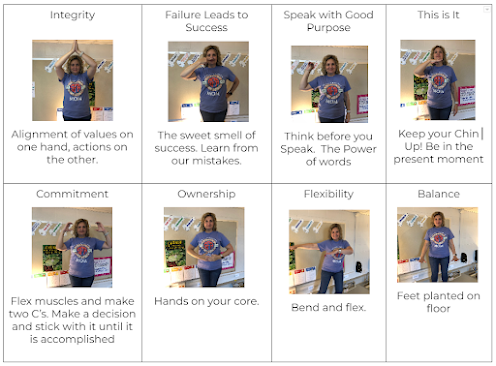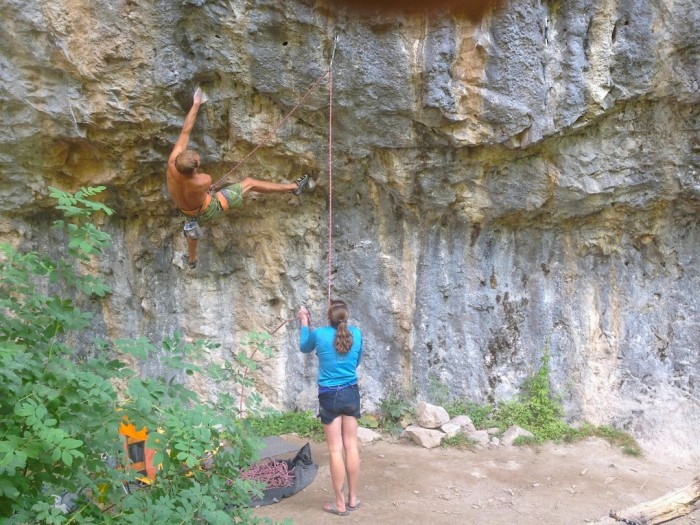Fast Llama's,
A repost - Stay on the Side of Hope...
There are many reasons for the attraction I hold for Doug Curry and his "How to Train Llama's" protocols and ideals. But, the one thing that hooked me was his treatise on hope, and more specifically staying on side of hope. When I first read his words in 2013, I was 900 miles away from my home base and I was struggling physically and emotionally. I didn't realise (or give myself time to process) how difficult is was to move across the state. My husband had gotten a great job and I had landed in a school with warm and friendly teachers who welcomed me and my son into their circle quickly. I had however, focused on the physical part of moving, getting my house ready to put on the market, applying and getting an interview, getting my school age son enrolled and of course the physical packing and unpacking involved. But, I did not reflect on the emotional toll moving would have on me and my classroom culture.
*side note - switching schools in the middle of the year is challenging even if you have been teaching for 20 years! My new principal let me in the building the Sunday before the students returned on Monday. The class had had a sub for 6 weeks and it looked that way! The goggle cabinet alone... oof
In many ways, unpacking my classroom decor helped get me settled back in, but, have you ever moved and an old item doesn't quite fit in your new space? That's how I was feeling. I had lost my identity somewhat of who I "was". I kept trying and trying to instill my traditions into a new place without really thinking about "why" I was instilling them in the first place. I was spinning, trying so hard to be who I thought I needed to be, do ALL the things I thought I needed to do, but, somehow couldn't. And there was a constant barrage of trainings, paperwork (including mistakes) and updates that needed to get done. I perceived nothing as working and I just felt miserable and most importantly, ineffective at teaching.
When I read Doug's words, it was the food my soul needed at a time when I was mourning my old life and it gave me the words and phrases I needed to activate a part of my brain that needed to hear it for my new life. You have to understand, my new home was lovely, my kids were flourishing, my husband and my careers were solid, but something was missing. I had lost my "why", the meaning behind why I was a teacher and what impact I could have on the next generation. I often blame the "big move" as me feeling this way, but, some small part of me thinks that Doug's message would of impacted me even if I had never moved. Proof that we are forever learning new things and when we open our hearts and let the light in, it can change us in ways that we could never imagine, even after 20 years of classroom teaching.
Here is his message, I hope it inspires you to reflect on your "why" and the impact you can have on your students.
Hope or Hopelessness-
The Deciding Factor in your School Two Sides
When you enter any school as a teacher, in particular a school with special challenges, which by the way, all schools have, there will always be a struggle as to which you side you take. There is the side of hope and the side of hopelessness. There is the side where you look at a child who comes from difficult circumstances. He may not have a mother or a father. He may have been abused. He may just now be learning the language. He has lived in generational poverty forever, and both he and his family really don’t know any other way to live. He may have siblings already incarcerated. His parents may be in and out of jail. Perhaps neither of them wants him anymore. He may come from a family that only sends him to school because it is the law. Education is not a priority. It is not seen as the way to anything. The family may be hungry, and so is the student. It may be all the family knows. Coming from this situation, the student may express, “I don’t care about this stuff” when faced with any educational task you lay before him. The student may appear to be hostile. The student won’t read in class because he never did learn to read, yet somehow he is in your 8th grade Language Arts class. When faced with this student and others like him, which side are you on? There is one side that thinks, “You know, this student only gets one chance at life. He may have been dealt a lousy hand of cards.
But you know what? Our school is the answer for him! Give him to me! I will help him see what his future can be! I will help him learn to work hard and experience success! If he doesn’t know how to read, our school will teach him. If he is hostile, we will win him over. We will love him. We will show him the first light he may have ever seen in a life of darkness. If we love him unconditionally, and we refuse to ever give up on him, all of the bad things that have happened to him will become his strengths in the future. Collectively, as a school we can do that!
We have that power to influence kids. He will be successful! We won’t have it any other way!” The other side thinks, “What do you expect me to do with him? I can’t change what he’s been through. I can’t make him care. I have no power to make his life better.” Which side? In every school you will find folks representing both sides.
Most teachers begin the profession on the side of hope. However, teaching is hard, and challenges occur. Many teachers, when faced with adversity, slowly start moving to the other side. If they don’t choose to leave the profession, they believe that the only way they can survive is to stay on the side of hopelessness. This way they won’t get their feelings hurt. This way they won’t feel like a failure. There’s kind of a protection that comes with being on the side of hopelessness. When you stand on the side of hope, you risk failing. You risk failing and having everybody know it, because you were out there on a limb for everyone to see. Sometimes young teachers leave the side of hope because there is pressure from their coworkers to join the side of hopelessness. These are the grizzled veterans who can’t wait to tell the rookie “the way things really are” in this school. These grizzled veterans have a real stake in bringing others to the side of hopelessness. Deep down these veterans hate themselves for having abandoned the side of hope. It soothes the pain a bit when they successfully recruit someone else to come to their side.
Many teachers enter the profession at an age where they are far from complete in their own personal growth. They are still learning who they are and what they want from life. They may have never even learned how to be assertive and stand up for themselves in their own lives. Now they stand in front of 30 high school students every day during 3rd period.
Being able to successfully manage a classroom is often about how you view yourself. Are you confident in yourself? Are you able to acknowledge your weaknesses and faults? Are you comfortable when you realize that others know all too well your imperfections? If you are not comfortable, you are in danger of going from the side of hope to the other side very quickly. You are in danger of feeling personally attacked every time a student makes a bad decision or challenges your authority.
That normal little game that occurs in every classroom now becomes something much bigger to you. It becomes more about you and protecting who you are. When this happens, the side of hopelessness beckons you. If you don’t care, it’s much safer. You won’t get hurt. If your expectations are low or nonexistent, they are much easier to reach. Some young teachers end up on the side of hopelessness because they have a series of bad experiences due to poor administrators. Maybe they are thrown in a rowdy class of 7th graders and offered no help or support. Instead they are blamed for the chaos that ensues.
The choice now becomes one of leaving the profession or going to the side of hopelessness. Many teachers enter the profession burdened by warped or unrealistic expectations. They are weighed down by the “shoulds” such as “kids should act this way” or “things shouldn’t be this way.” “Kids should come to school knowing how to act.” “We shouldn’t have to teach kids how to act—I am a history teacher.” Teachers like this either leave or move to the hopeless side. As you read this, do you find that you are on the hopeless side? (Is this beginning to sound like the concluding moments of a church service?) I am not here to judge you for being on the side of hopelessness. You may have a very good reason that you went there, and it may very well have happened because of classroom management.
Keep going. We may get you to change sides.
Until Next Time...
http://www.fastllama.com/free-resources






















